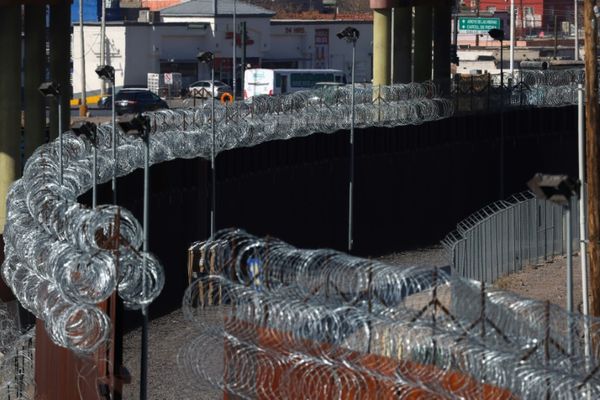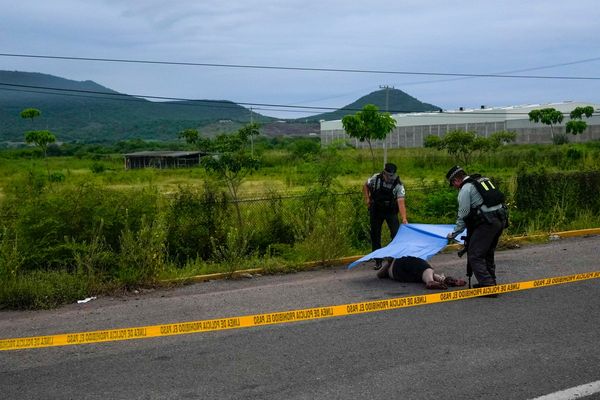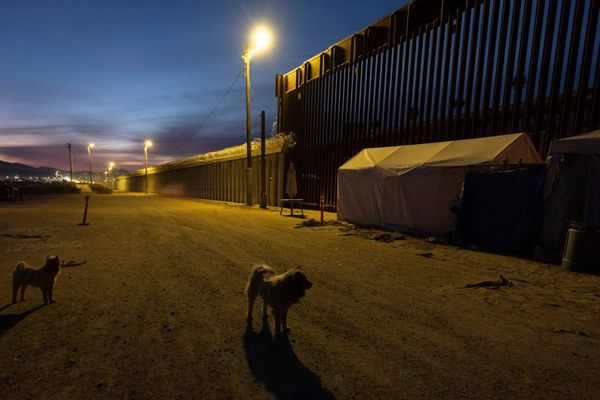ABC News: Luke Bowden
)At the western edge of Connorville, one of Tasmania's oldest and largest farms, the terrain rises sharply into the World Heritage area of the Great Western Tiers.
On the property's plains near Cressy, in the state's northern midlands, more than 20,000 sheep and 2,000 cattle graze.
But the livestock are now having to compete for space and food with an increasing number of wild fallow deer.
"We certainly have a deer problem here at Connorville, and at the back of Cressy and the Western Tiers," said Roderic O'Connor, the property's current custodian.
"We're finding mobs of 3, 4, 500 [deer] aggregating at certain times in the early evening or morning.
"It's been quite high the last three years particularly, we've been culling way over normal numbers," he said.
He said the deer eat almost the same amount as his sheep, and damage fencing, native vegetation and tree regrowth.
ABC News: Luke Bowden
)Populations in the spotlight
A draft report into the future management of wild deer in the state is set to be released for public appraisal by the Tasmanian government later this year.
But collecting data to help predict the future range and population numbers of fallow deer in the state has presented its own set of challenges.
"Deer are really cryptic and so they're quite tricky for us to observe," said Dr Joanne Potts, a Hobart-based statistician.
ABC News: Luke Bowden
)She co-authored a paper in 2014-15 on predicting the state's future deer numbers, and said statistics help underpin future deer management strategies.
"It puts our decision making into a transparent and explicit framework, so it helps us be quite honest about the decisions we are making going forward," Dr Potts said.
An aerial survey by the Department of Primary Industries, Parks, Water and Environment (DPIPWE) estimates the state's wild deer population has increased by 5.4 per cent each year since 2006.
ABC News: Luke Bowden
)In 2019, a survey of a third of the state estimated a total deer population of 53,000 — but has a range of error of 19 per cent.
"That study … gives us a good understanding of how many deer are in that region, but we can't extrapolate those findings to the rest of Tasmania," Dr Potts said.
But any increase in deer numbers is concerning to Mr O'Connor.
"Somewhere along the line something has changed, so we need to be more adaptive.
Is hunting the answer?
Tasmania's six-week-long stag hunting season began late last month.
"The deer season is almost like our excursion, our bit of excitement to go and hunt after a nice stag rather than helping landowners keep population numbers down," said recreational hunter Jess Byfield.
"Eight years of stag season on Crown land and I've not got one yet," Tash Byfield said.
This season is the second in Tasmania that there is no bag limit on antlerless deer harvested by hunters, after the state government introduced the measure early last year.
ABC News: Luke Bowden
)"It's a great step in the right direction, when we're trying to balance the high population numbers and farm owners needing to control those numbers with still keeping the deer here as a genuine resource for us to utilise," Jess Byfield said.
Mr O'Connor said the lack of a bag limit during the hunting season had made an impact on the animals' population, but there was a way to go before it was brought under control.
"Introducing an unlimited doe cull in a certain period of time, that's made big gains, but we shouldn't stop there," Mr O'Connor said.
ABC News: Luke Bowden
)He believes encouraging recreational hunters is one way to reduce the animals' population.
"We've been fortunate that we've been able to get people to cull does outside of stag season, but I think it's getting harder and harder for people to have the capacity to cull larger numbers," he said.
"Recreational hunters are certainly the answer, but there's recreational hunter plus, and that's what we need to look for."







